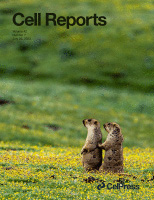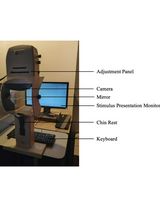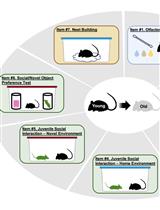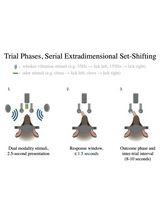- EN - English
- CN - 中文
A New Behavioral Paradigm for Visual Classical Conditioning in Drosophila
果蝇视觉经典条件反射的一种新行为范式
发布: 2023年11月05日第13卷第21期 DOI: 10.21769/BioProtoc.4875 浏览次数: 1962
评审: Nafisa M. JadavjiAnonymous reviewer(s)
Abstract
Visual learning in animals is a remarkable cognitive ability that plays a crucial role in their survival and adaptation. Therefore, the ability to learn is highly conserved among animals. Despite lacking a centralized nervous system like vertebrates, invertebrates have demonstrated remarkable learning abilities. Here, we describe a simple behavioral assay that allows the analysis of visual associative learning in individually traceable freely walking adult fruit flies. The setup is based on the simple and widely used behavioral assay to study orientation behavior in flies. A single wing-clipped fly that has been starved for 21 h is placed on a platform where two unreachable opposite visual sets are displayed. This visual learning protocol was initially developed to study the cognitive ability of fruit flies to process numerical information. Through the application of the protocol, flies are able to associate a specific visual set with an appetitive reward. This association is revealed 2 h later during the testing session where we observed a change in their preference upon learning (i.e., change in their spontaneous preference). Moreover, this protocol could potentially be used to associate any other visual object/property to the reward, expanding the opportunities of studying visual learning in freely walking fruit flies at individual level.
Graphical overview
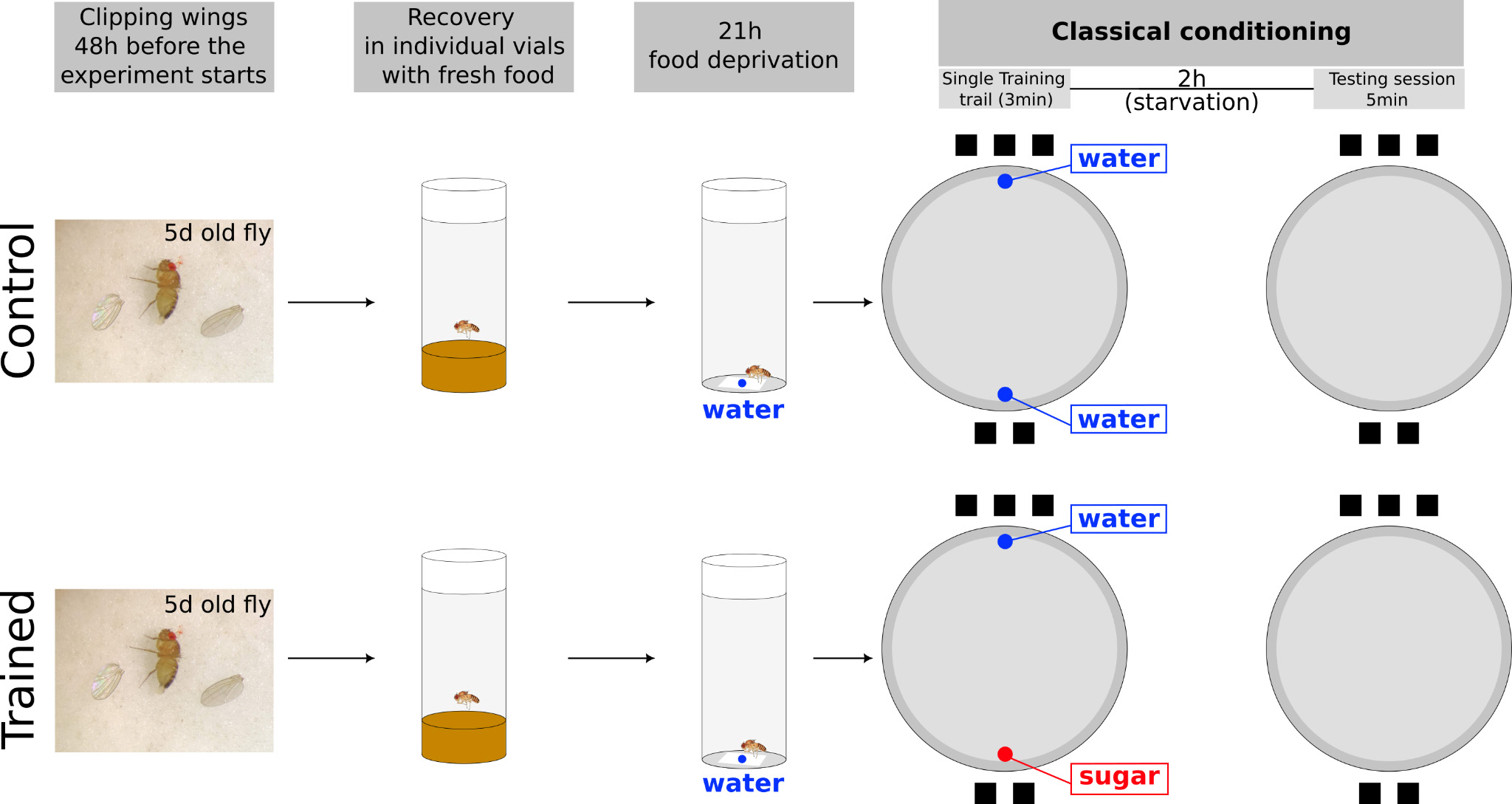
Graphical overview of conditional learning protocol. Forty-eight hours before conditioning, the wings of the flies are clipped, and individual flies are left to recover in a fresh food vial. Twenty-one hours before the conditional learning starts, flies are transferred to a starvation vial containing wet paper. The training session consists in placing a drop of sugar next to the place with the lower number of objects (numerosity) and a drop of water next to the larger numerosity. The fly is placed in the arena and left to freely walk for three minutes. Once the session is finished, the fly is placed back in their empty vial for 2 h until the testing session starts.
Background
Associative learning enables animals to prepare for behaviorally relevant events, thus being highly conserved. Learning to predict events in the environment and which stimuli tend to occur together help us interact effectively with our environment. This cognitive process has been shown to play a role in a wide diversity of behaviors, including interactions with predators, prey, rivals, and mates. Thus, learning is expected to be essential for survival and reproduction in many species. The study of such associative learning in simple model systems, like the fruit fly Drosophila melanogaster, facilitates its understanding especially at multiple levels of analysis. This model allowed researchers to uncover principles and mechanisms of learning and memory as it offers a wide range of powerful genetic tools to dissect intrinsic molecular mechanisms (McGuire et al., 2005; Pitman et al., 2009).
During Pavlovian classical conditioning, animals learn to associate a salient unconditioned stimulus with a neutral stimulus. Olfactory classical conditioning is a well-studied form of associative learning in the fruit fly D. melanogaster (see Busto et al., 2010). Subsequently, other methods to measure various types of learning and memory have been proposed, including courtship conditioning (Koemans et al., 2017), aversive phototaxic suppression assay (Ali et al., 2011), and wasp-exposure conditioning (Kacsoh et al., 2019).
Regarding visual learning, it has been extensively studied using the so-called flight simulator (Wolf and Heisenberg, 1991). Here, a tethered fly is flying stationarily in the center of a cylindrical virtual arena panorama where different visual stimuli are displayed. Combined with heat punishment, the setup changes into an operant conditioning paradigm in which the fly learns to control the appearance of the punisher. Like this, animals have to learn from the consequences of their own and voluntary actions in order to avoid the punishment. Other studies show that populations of flies are able to associate the color of the illumination alone (Vogt et al., 2015) or in combination with odors (Vogt et al., 2014; Thiagarajan et al., 2022; Okray et al., 2023) with an appetitive or aversive stimulus.
Despite the relative abundance of aversive learning assays in which flies operantly avoid heat by choosing certain orientations relative to landmarks, only a few behavioral paradigms for appetitive visual learning in adult Drosophila have been reported to date (Heisenberg, 1989; Schnaitmann et al., 2010; Vogt et al., 2014). Here, we established a new behavioral paradigm for visual classical conditioning in freely-walking adult Drosophila. In their natural environment, fruit flies primarily move by walking rather than flying. Studying them in a walking state allows us to better understand their visual learning abilities in a context that aligns with their ecological niche. This assay allows analysis of the behavior of individual flies while they make a choice, learn, and memorize (short-term memory) visually rewarded associations. The paradigm described here is based on a simple behavioral assay to study orientation behavior in flies (Buridan paradigm), which can be easily assembled with a few available supplies (Figure 1). Particularly, this visual learning is based on the spontaneous numerical preference of flies, which manifests as a larger occupancy next to the higher numerosity in a two-choice test (Bengochea et al., 2023). The setup consists of presenting two visual sets of different numbers of objects that are located opposite to each other, in order to be processed individually and not treated as a whole. Since flies have a spontaneous preference for larger sets of objects, the appetitive reward is placed next to the non-preferred numerical set (lower numerosity), while the innately preferred one is water-paired (Figure 1B). A single fly is placed on the platform (Figure 1C). During the 3-min training trial, the fly explores the arena and eventually reaches the sugar and water. Two hours after training, the learned preference of the fly is evaluated during a 5-min testing phase (Graphical overview). By analyzing the walking occupancy in the arena, we are able to observe a decrease or change in their natural tendency to prefer the larger quantities due to the association of the sugar with the visual set. The representative results of this assay reveal that the application of the protocol impacts on the fly’s numerical preference (Figure 2, Bengochea et al., 2023). A single training trial of 3 min is sufficient to teach flies to associate an appetitive reward with a visual set that lasts at least two hours and to partially or totally reverse a spontaneous tendency.
Materials and reagents
Fly stocks
Wildtype CantonS flies (BL#64349, 7 days old at the moment of the training session)
Materials
Eight circular fluorescent tubes (Philips, L 40 w, 640C circular cool white)
Lamp holder and connectors G10Q (Vossloh, catalog number: 101528)
Two electrical transformers (Osram Quicktronic QT-M 1×26–42)
Eight power cables with switch (Tibelec, catalog number: 163910)
Diffuser paper (Canson, Translucent paper 180 g/m2)
Ten squares of black paper (31 mm × 31 mm)
Filter paper (Whatman, catalog number: 1001-110)
Paint brush (Size 1; Boesner, model: Da Vinci Nova Serie 1570, catalog number: D15701))
Empty vials (Polystyrene; Dutscher, catalog number: 789001B)
Invisible tape (Scotch Magic 3M, catalog number: 7100027389)
Seamstress ruler
Pencil
Reagents
Distilled water
Mineral water (Evian)
Glucose 1.5 M (Sigma-Aldrich, catalog number: G8270), prepared with Evian water
70% ethanol (VWR, catalog number: 83801)
Agar (Genesee Scientific, catalog number: 66-103)
Cornmeal (Genesee Scientific, catalog number: 62-100)
Yeast (Genesee Scientific, catalog number: 62-106)
Glucose (Sigma-Aldrich, catalog number: 68270)
Molasses (Genesee Scientific, catalog number: 62-117)
Ethanol (VWR, catalog number: 83801)
Nipagin (Thermo Fisher Scientific, catalog number: A14289)
Propionic acid (Sigma-Aldrich, catalog number: P5561)
Drosophila standard cornmeal/agar food (see Recipes)
Recipes
Drosophila standard cornmeal/agar food
8 g of agar
60 g of cornmeal
50 g of yeast
20 g of glucose
50 g of molasses
19 mL of ethanol 70%
1.9 g of Nipagin
10 mL of propionic acid
Bring up to 1 L of final volume with distilled water
Equipment
Scissor (Vannas Spring Scissors, 3 mm Blades; Fine Science Tool, catalog number: 15000-00)
CO2 pads (Dutscher, catalog number: 789183)
CO2 pistol (Dutscher, catalog number: 789096)
Two Buridan’s Paradigm: include baseplate with platform and chamber, acrylic cylinder, and posts to hold the lamps (Peira Scientific Instruments, https://www.peira.be/)
Two webcams (Logitech HD Pro c920 webcam full HD)
Two PCs
Fly incubator (Panasonic, MIR-554-PE; fluorescent lamp: Panasonic FL15D 15W)
Microscope (Leica, M80)
Software
Buritrack (http://buridansourceforge.net)
R Core Team (https://www.R-project.org/)
RStudio (https://support--rstudio-com.netlify.app/products/rstudio/)
Procedure
文章信息
版权信息
© 2023 The Author(s); This is an open access article under the CC BY-NC license (https://creativecommons.org/licenses/by-nc/4.0/).
如何引用
Bengochea, M., Preat, T. and Hassan, B. (2023). A New Behavioral Paradigm for Visual Classical Conditioning in Drosophila. Bio-protocol 13(21): e4875. DOI: 10.21769/BioProtoc.4875.
分类
神经科学 > 行为神经科学 > 认知
您对这篇实验方法有问题吗?
在此处发布您的问题,我们将邀请本文作者来回答。同时,我们会将您的问题发布到Bio-protocol Exchange,以便寻求社区成员的帮助。
Share
Bluesky
X
Copy link


